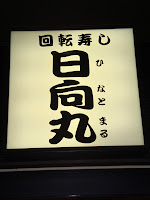

Today my mother and I visited the oldest temple in Tokyo, Senso-ji. The neighborhood is meant to be old-world Tokyo, but as is often the case, that speaks only for the street between the subway station and the major tourist attraction. The rest is very like a regular neighborhood: as my friend Keisuke described it "where real Japanese people live." The shrine was wonderful - mostly because there were lots of fun activities: lighting votive incense and candles, drawing fortune sticks (mine was "no. 91 good fortune" and mother refused to play for fear of what she might draw), cleansing the hands and mouth, throwing money to Buddha. What struck me throughout the day was the fascination of the Japanese language, mostly because, despite my protestations, mother behaved as though I was fluent, could read all signs and understand every conversation in Japanese.

Every sign we saw, and every voice we heard, she turned to me and asked "what did she say?" As though I had acquired fluency in Japanese by osmosis. As we left the restaurant where we had sushi lunch, she instructed me to take the name of the restaurant (left) so she could note it in her diary - as though she was asking me to pass the soy sauce. And when the water bus didn't arrive, she asked me what time the next one was due (below). On it went.

So I spent a lot of time looking at the langauge even though I don't read it. I can nevertheless appreciate its aesthetic. It is a beautiful language to look at, and delightful to listen to. It is indeed a visual language, not a semiotic language. It is conceptual and abstract, vertical in its presentation - though not always I realized when dutifully attending to my mother's needs this afternoon - and vertical in its logic, moving from one layer to the next, not along a horizontal axis. Like the series of images that it is, Japanese doesn't have a cause and effect narrative logic, it doesn't have a compositional telos, sentence structure or forward motion. More like an experimental film, it is a series of image grabs that, taken together, communicate concepts and ideas.

And all over the temple are written characters, symbolizing something important, ancient, divine. Perhaps the banners that decorate buildings and walls, the streets, the subway cars are also decoration? Where in the West we might fight images, in Japan, the language seems to function as both image and text. Given how language dictates our identities, our culture, our beliefs, our prejudices, even our desires, I wonder if the "real Japanese people" - as opposed to those masquerading in Shinjuku and Harajuku! - live their lives in imitation of their language? And what then does this life look like? A life in which the on going search for identity is given an image, not a narrative, in which notions of ambition, success, and the relations between people are not overtaken by accummulation (of wealth), a rise to the top of a corporate ladder, and the desperate need to be better than the neighbors?
 All this would be to assume that, in spite of the characters, that is, the visualization of the Japanese langauge, there has been no impact of the West's overblown (super) ego on Japan. And judging by the number of men in the "women only" subway car (left) and the hoards of Japanese people with dyed hair and makeup (below), we have indeed managed to taint the images with our words.
All this would be to assume that, in spite of the characters, that is, the visualization of the Japanese langauge, there has been no impact of the West's overblown (super) ego on Japan. And judging by the number of men in the "women only" subway car (left) and the hoards of Japanese people with dyed hair and makeup (below), we have indeed managed to taint the images with our words.
No comments:
Post a Comment